10 Creative Ideas for a Small Garden
Plant ideas small garden
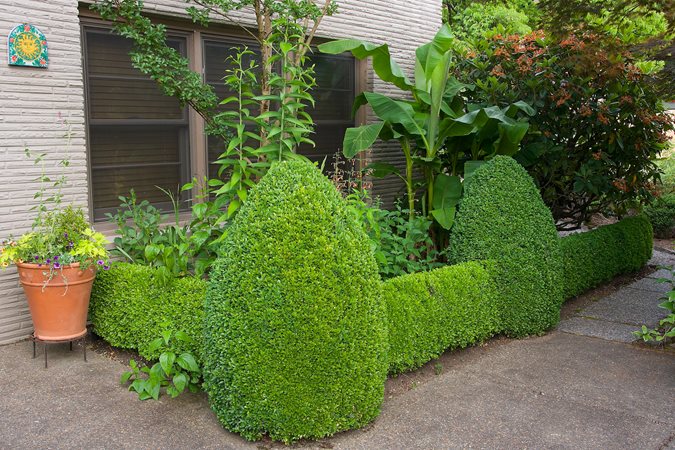
Having a small garden doesn’t mean you can’t unleash your creativity and transform it into a beautiful and functional space. With some innovative ideas, you can maximize the potential of your small garden and create a charming oasis right outside your door.
1. Vertical Gardening: Make use of vertical space by growing plants on trellises, fences, or walls. This not only adds visual interest but also maximizes the available space in your small garden.
“Vertical gardening can be a great solution for small gardens, allowing you to grow a variety of plants without taking up too much space,” says gardening expert, Susan Johnson.
2. Container Gardening: Use containers of different shapes and sizes to create a visually appealing garden. You can grow herbs, flowers, or even small vegetables in pots or hanging baskets.
3. Fairy Garden: Create a magical atmosphere by designing a fairy garden with miniature plants, tiny houses, and decorative elements. This whimsical addition will bring charm and enchantment to your small garden.
4. Edible Landscaping: Blend beauty and functionality by incorporating edible plants into your garden design. You can grow vegetables, fruits, and herbs alongside ornamental plants to create an attractive and edible landscape.
5. Water Features: Add tranquility and a sense of calm to your small garden with the addition of a water feature. A small pond, a cascading fountain, or a simple birdbath will create a soothing and relaxing atmosphere.
6. Hanging Gardens: Utilize wall space by creating hanging gardens. Hang pots or planters on a wall, fence, or pergola to add greenery to your small garden without taking up valuable floor space.
7. Vertical Herb Garden: Create a dedicated space for growing herbs by installing a vertical herb garden. This allows easy access to fresh herbs and adds an attractive feature to your small garden.
8. Potted Trees: If you want to add height and drama to your small garden, consider planting potted trees. They can be moved around to create different focal points and provide shade and privacy.
9. Lighting: Illuminate your small garden with well-placed outdoor lighting. Use string lights, lanterns, or solar-powered lamps to create a cozy and magical atmosphere in the evenings.
10. Recycled Materials: Get creative and use recycled materials, such as old tires, wooden pallets, or wine barrels, to create unique planters or garden art. This adds a personal touch and helps reduce waste at the same time.
“By thinking outside the box and incorporating these creative ideas, you can transform your small garden into a stunning and unique space that reflects your personality and love for nature,” concludes Johnson.
Vertical gardening to maximize space
When you have a small gardening space, it’s important to make the most of every inch available. One creative solution to maximize space in a small garden is vertical gardening. This technique involves growing plants vertically, using walls, trellises, or hanging baskets to create a lush and vibrant garden.
Wall-mounted planters

A great way to save space in a small garden is to utilize wall-mounted planters. These can be easily attached to a wall or fence, allowing you to grow a variety of plants vertically. Choose plants with cascading foliage or flowers to create a beautiful vertical garden that adds interest and color to your space.
Hanging baskets
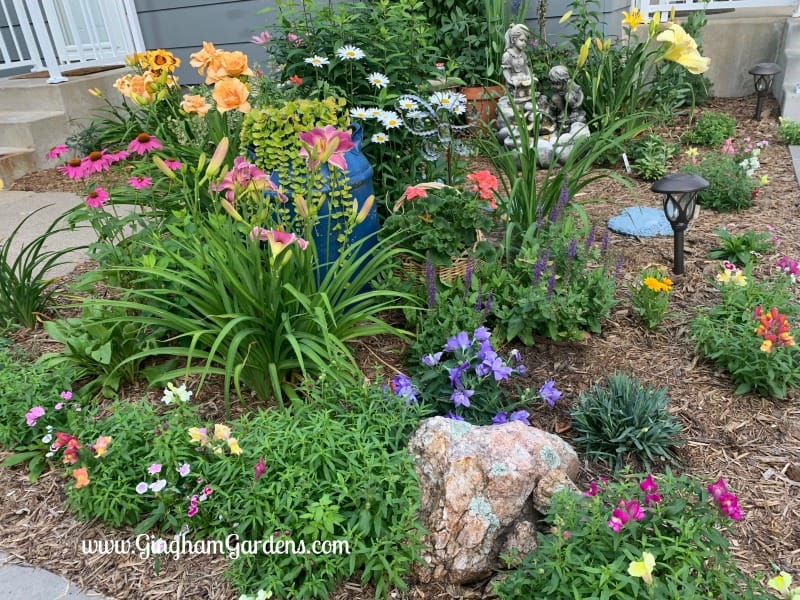
Another option for vertical gardening is using hanging baskets. Hang these baskets from hooks or overhead beams to add a unique touch to your small garden. You can plant a variety of flowers or herbs in these baskets, creating a stunning display that not only saves space but also adds an element of beauty to your garden.
Trellises and arbors

Installing trellises or arbors in your small garden can provide structure for vertical gardening. These structures can be used as support for climbing plants such as vine or ivy, allowing you to take advantage of the vertical space in your garden. Additionally, trellises and arbors can serve as decorative focal points, adding a touch of elegance to your outdoor space.
Benefits of vertical gardening:
- Maximizes space in a small garden
- Creates a visually appealing garden with different heights and textures
- Can be used to grow a variety of plants, including flowers, herbs, and vegetables
- Allows for easy maintenance and harvesting
Vertical gardening is a creative and practical solution for making the most of a small garden. By utilizing walls, trellises, and hanging baskets, you can create a lush and vibrant space that is both visually appealing and functional.
Miniature fairy gardens for a touch of magic
Create a whimsical world in your small garden with miniature fairy gardens
Adding a touch of magic to your small garden is easy with miniature fairy gardens. These enchanting creations bring a sense of wonder and imagination to any outdoor space. Imagine tiny fairies, charming cottages, and delicate plants, all nestled in a tiny world of their own.
There are many ways to create a miniature fairy garden that suits your taste and style. You can start by choosing a container or a small corner in your garden where you want to create your magical realm. Containers like flower pots, wooden boxes, or even birdhouses can be transformed into fairy garden habitats.
Once you’ve chosen your container, it’s time to add the magical elements. You can use miniature furniture, such as benches, tables, and chairs, along with tiny fairy figurines to bring your garden to life. Don’t forget to add some whimsical accessories like a tiny bridge, a fairy swing, or a miniature pond.
A key aspect of miniature fairy gardens is the selection of plants. Choose small plants that fit the scale of your design, such as mosses, small ferns, or miniature flowers. These plants will create a lush and enchanting backdrop for your fairy realm.
To complete the look, add some fairy lights or small lanterns to create a magical ambiance in the evening. You can also add colorful pebbles, seashells, or fairy dust to add extra sparkle and charm.
Creating a miniature fairy garden is not only a fun and creative project, but it also brings a touch of magic and whimsy to your small garden. It’s a great way to escape the realities of everyday life and transport yourself into a world of fantasy and enchantment.
So why not unleash your inner child and create your own miniature fairy garden? Let the magic unfold and transform your small garden into a whimsical wonderland.
Container gardening for flexibility and portability

Container gardening is a great option for small gardens as it provides flexibility and portability. By using containers, you can easily move your plants around to optimize sunlight exposure or change the garden’s layout to suit your preferences.
One advantage of container gardening is the variety of plants you can grow. From flowers to vegetables and herbs, containers offer a versatile option for cultivating a wide range of plants in a small space. You can mix and match different plants to create a visually appealing garden.
Another benefit of container gardening is the ability to control soil conditions. You can choose specific soil types and customize them according to the needs of different plants. This allows you to create optimal growing conditions and ensure the health and vitality of your garden.
Container gardening also allows for easy maintenance. Since the plants are in individual pots, you can easily monitor their growth and address any issues such as pests or diseases. Additionally, by using containers with proper drainage, you can avoid overwatering and keep your plants healthy.
Furthermore, container gardening is perfect for those who have limited mobility or live in rented spaces. The portability of containers enables you to create a garden wherever you want, whether it’s a balcony, patio, or even indoors. You can move your plants around as needed, making it possible to garden regardless of your living situation.
In conclusion, container gardening offers flexibility and portability, making it an excellent choice for small gardens. With the ability to control soil conditions and grow a variety of plants, it provides an opportunity to create a beautiful and thriving garden in a limited space.
Hanging plants for a unique and eye-catching display
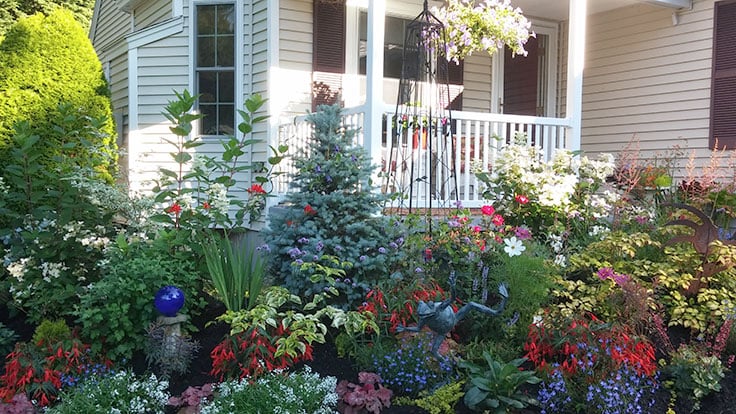
If you want to add a unique and eye-catching element to your small garden, consider incorporating hanging plants. Hanging plants not only provide an interesting focal point, but they also make use of vertical space, which is especially valuable in a small garden.
1. Cascading vines: Choose trailing plants with long vines that will hang down from a hanging planter, creating a beautiful cascading effect. Some popular options include English Ivy, String of Pearls, and Pothos.
2. Floral baskets: Hang colorful floral baskets filled with bright flowers to add a pop of color to your garden. Consider using a mix of annuals and perennials to ensure continuous blooms throughout the season.
3. Edible herbs: Hang small baskets or planters filled with your favorite culinary herbs, such as basil, mint, and rosemary. This not only adds visual interest, but also allows you to easily access fresh herbs for cooking.
4. Air plants: Air plants are a unique type of plant that do not require soil to grow. They can be easily hung from string or wire, creating a striking and minimalist display. Plus, their low maintenance nature makes them ideal for busy gardeners.
5. Succulent gardens: Create a hanging succulent garden by planting a variety of succulents in a vertical planter. The unique shapes and colors of succulents will add visual interest to your garden, while the vertical arrangement will save space.
6. Hanging terrariums: Hang glass terrariums filled with moss, air plants, and small ferns for a whimsical touch. These miniature ecosystems will add a touch of natural beauty to your garden.
7. Bird feeders: Hang bird feeders filled with seeds to attract birds to your garden. Not only will this provide a lively and entertaining display, but it will also help to bring more wildlife into your garden.
8. Macrame plant hangers: Add a bohemian touch to your garden by hanging plants in macrame plant hangers. These handmade hangers come in a variety of styles and colors, allowing you to create a unique look for your garden.
9. Vertical gardens: Create a vertical garden by hanging a series of planters or pockets on a wall or fence. Fill them with a mix of trailing plants, succulents, and flowers to create a lush and vibrant display.
10. Herb drying rack: Hang a wooden or metal rack in your garden to dry herbs for culinary use. This functional display not only adds visual interest, but also allows you to preserve and enjoy your herbs throughout the year.
By incorporating hanging plants into your small garden, you can create a unique and eye-catching display that maximizes both vertical space and visual appeal. Whether you choose cascading vines, floral baskets, or hanging terrariums, there are plenty of options to suit your style and preferences.
Edible landscaping for a tasty and functional garden
1. Growing your own fruits and vegetables
Edible landscaping is the practice of integrating food-producing plants into your garden design, creating a space that is both beautiful and productive. By growing your own fruits and vegetables, you can have access to fresh, organic produce right at your fingertips. Whether you have a small balcony or a spacious yard, there are plenty of options to choose from, including tomatoes, lettuce, herbs, and much more.
2. Creating a herb garden
A herb garden is a perfect addition to any small garden. It not only adds a burst of flavor to your meals but also provides a fragrant and visually appealing space. You can plant a variety of herbs such as basil, mint, rosemary, and thyme in pots or small raised beds. These herbs can be easily maintained and harvested, making them a convenient choice for those who love cooking with fresh ingredients.
3. Incorporating edible flowers

Edible flowers are a unique and beautiful addition to any garden. They not only add color and texture but can also be used in various culinary creations. Some popular edible flowers include pansies, nasturtiums, and marigolds. These flowers can be used to garnish salads, desserts, and even cocktails, adding an extra element of visual appeal and flavor to your dishes.
4. Creating vertical gardens
If you have limited space in your garden, consider creating a vertical garden. This innovative technique allows you to grow plants vertically, utilizing walls, fences, or trellises. You can grow climbing vegetables, such as beans, cucumbers, and tomatoes, that can be trained to grow upwards. This not only maximizes your garden space but also adds a unique aesthetic element to your landscape.
5. Designing a fruit tree espalier
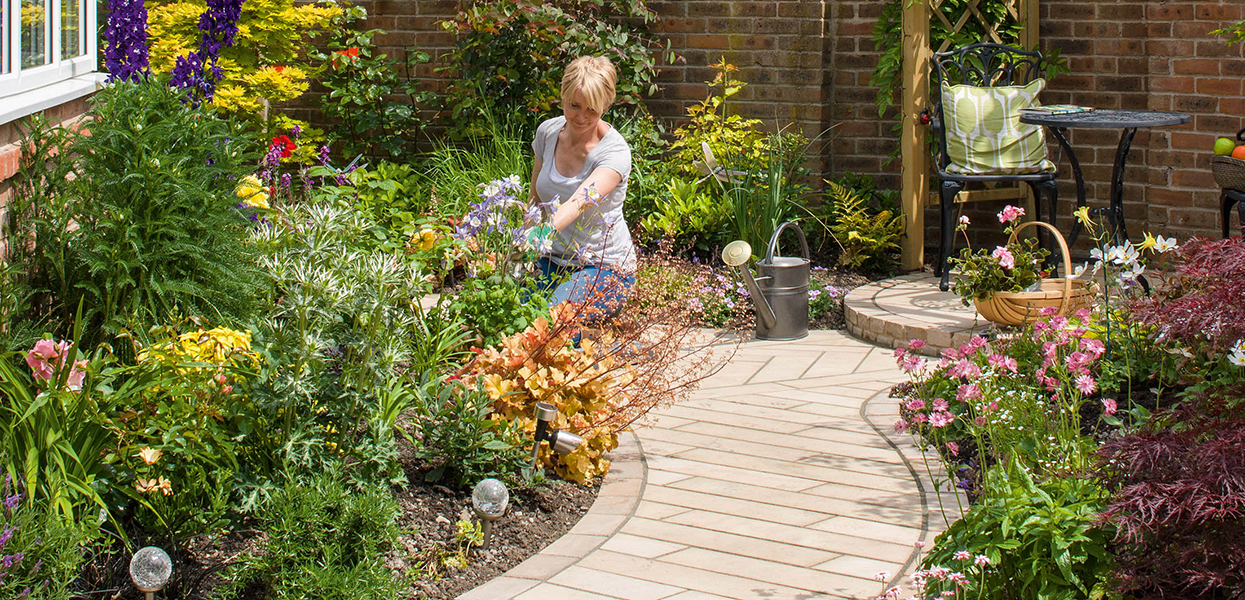
A fruit tree espalier is a method of training fruit trees to grow in a flat, decorative pattern against a wall or fence. This technique not only saves space but also creates a stunning focal point in your garden. You can choose from a variety of fruit trees, such as apple, pear, or peach, and design them in different espalier patterns, such as candelabra or fan shapes. This not only provides delicious fruit but also adds a touch of elegance to your outdoor space.
6. Growing edible hedges

Edible hedges are an excellent way to create a boundary around your garden while also providing a source of food. You can plant edible hedge plants such as raspberries, blueberries, or gooseberries, which not only produce delicious berries but also add a beautiful, vibrant element to your landscape. These hedges can be easily maintained and provide a natural habitat for birds and beneficial insects.
7. Cultivating a salad garden
:max_bytes(150000):strip_icc()/small-garden-ideas-and-inspiration-4101842-01-5e0462c2365e42de86a4f3ebc2152c1b.jpg)
A salad garden is a fantastic option for those who love fresh salads and greens. You can grow a variety of lettuces, spinach, and other leafy greens in containers or raised beds. With a salad garden, you have the convenience of picking your greens whenever you need them, ensuring that your salads are always crisp, flavorful, and packed with nutrients.
8. Planting a berry patch
If you have a sunny spot in your garden, consider planting a berry patch. Berries such as strawberries, raspberries, and blackberries are easy to grow and require minimal maintenance. They can be planted in containers or in the ground, and with proper care, they will reward you with a bountiful harvest of juicy, flavorful berries.
9. Growing edible mushrooms

Another unique and delicious addition to your edible garden is growing your own mushrooms. Mushrooms like oyster, shiitake, and cremini can be easily cultivated indoors or in shaded areas of your garden. With the right growing conditions and proper care, you can enjoy a continuous supply of fresh mushrooms, adding a savory and earthy element to your cooking.
10. Creating a kitchen garden
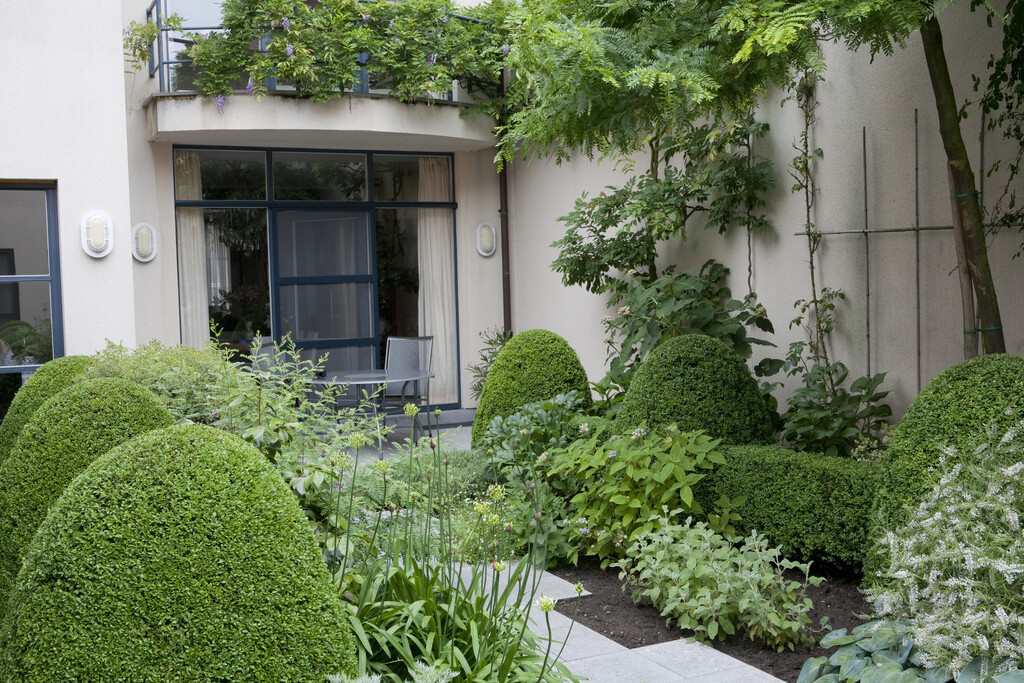
A kitchen garden is a dedicated space for growing herbs, vegetables, and fruits that are commonly used in cooking. By designing a kitchen garden, you can conveniently access fresh ingredients for your recipes. Consider planting a variety of culinary herbs like parsley, thyme, and chives, along with staple vegetables like tomatoes, peppers, and zucchini. This will not only enhance your culinary experiences but also provide a beautiful and functional garden space.
Succulent gardens for low-maintenance beauty
If you’re looking for a way to add beauty to your small garden without the hassle of high maintenance plants, consider creating a succulent garden. Succulents are low-maintenance plants that require minimal watering and care, making them perfect for busy gardeners or those with limited time.
Succulents come in a variety of shapes, sizes, and colors, making it easy to create a unique and eye-catching garden. From small, compact rosettes to tall, spiky plants, there is a succulent for every style and preference. Consider mixing different types of succulents together to create a visually appealing display.
One of the benefits of succulent gardens is that they can be grown in a variety of containers, making them suitable for small spaces. You can plant succulents in pots, hanging baskets, or even in small glass terrariums for a modern and sleek look. Experiment with different containers to find the perfect fit for your garden.
In addition to being low-maintenance, succulents are also drought-tolerant plants, meaning they can survive in dry conditions with little water. This makes them a great choice for gardens that receive little rainfall or for those who want to conserve water. However, it’s important to note that while succulents can survive with minimal watering, they still need some water to thrive.
To care for your succulent garden, make sure to provide them with well-draining soil and a sunny spot in your garden. Water your succulents sparingly, allowing the soil to dry out between waterings. Overwatering can cause the roots to rot, so it’s important to find the right balance.
Whether you have a small balcony or a tiny backyard, a succulent garden is a great way to add beauty and greenery to your space. With their low-maintenance nature and unique beauty, succulents are an excellent choice for any garden enthusiast. So why not give it a try and create your own succulent garden today?
Zen gardens for a peaceful and tranquil retreat
Create a serene space with a Zen garden
If you are looking to create a peaceful and tranquil retreat in your small garden, a Zen garden can be the perfect solution. Zen gardens, also known as Japanese rock gardens, are minimalist in design and aim to bring a sense of harmony and serenity to the space.
Simplicity is key

When designing a Zen garden, simplicity is key. Keep the design clean and uncluttered, with minimal plants and decorations. Use a combination of rocks, sand, and gravel to create a sense of calmness and harmony. The simplicity of the garden will allow you to relax and find peace in your outdoor space.
Focus on natural elements
:max_bytes(150000):strip_icc()/RhinebeckTour07-101-2-57ff634b5f9b5805c2247b90.jpg)
Incorporate natural elements into your Zen garden to enhance the peaceful atmosphere. Use bamboo or wooden fences to create boundaries and add a touch of nature to the space. Integrate water features such as a small fountain or a pond to bring soothing sounds and create a sense of tranquility.
Mindful placement of rocks and gravel

The arrangement of rocks in a Zen garden is crucial for creating a calming environment. Choose rocks of different sizes and shapes and place them strategically throughout the garden. Create patterns in the gravel by raking it in a specific way, representing waves or ripples in a pond.
Seating for meditation and reflection
Include a comfortable seating area in your Zen garden where you can sit and meditate or simply enjoy the tranquility of the space. Add cushions or a small bench for added comfort. This will be the perfect spot for introspection and relaxation in your outdoor retreat.
Maintaining a Zen garden
Regular maintenance is important to keep your Zen garden looking pristine and peaceful. Remove any fallen leaves or debris, keep the gravel raked, and trim any overgrown plants or shrubs. A well-maintained Zen garden will continue to provide a peaceful and tranquil retreat for you to enjoy.
Benefits of a Zen garden
:max_bytes(150000):strip_icc()/choosing-plants-for-a-small-garden-1402311-hero-c9be409af5474dcd8d7f6a79f1aea5e6.jpg)
A Zen garden can bring numerous benefits to your life. It provides a space for relaxation, stress reduction, and meditation. It allows you to disconnect from the hustle and bustle of everyday life and find a moment of peace and serenity in your own backyard.
In conclusion, creating a Zen garden can transform your small garden into a peaceful and tranquil retreat. With its minimalist design, natural elements, and mindful placement of rocks and gravel, a Zen garden can bring a sense of harmony and serenity to your outdoor space.
Vertical herb gardens for fresh and flavorful cooking
1. Maximizing space
When your garden space is limited, vertical herb gardens can save the day. By utilizing vertical surfaces such as walls or fences, you can create a stylish and functional garden without taking up valuable floor space. This allows you to grow a wide variety of herbs and spices, giving you an abundant supply of fresh and flavorful ingredients for your cooking.
2. Easy maintenance

Vertical herb gardens are not only space-saving but also low-maintenance. With the right setup, you can easily access and care for your herbs without bending or kneeling. This makes watering, pruning, and harvesting a breeze. Plus, vertical gardens can be designed with efficient irrigation systems to keep your herbs hydrated and healthy.
3. Versatility in design
One of the best things about vertical herb gardens is that they offer endless design possibilities. You can use anything from hanging planters to repurposed pallets or even stackable wall-mounted boxes to create a unique and eye-catching herb garden. This allows you to showcase your creativity while adding a touch of greenery to your living space.
4. Easy access for cooking

Having an herb garden right outside your kitchen door is convenient, but having a vertical herb garden is even better. With herbs grown vertically, you can easily see and access your favorite herbs whenever you need them. Whether it’s a handful of basil for a pasta sauce or some fresh mint leaves for a refreshing drink, your vertical garden will provide you with instant access to the flavors you love.
5. Green solutions

Vertical herb gardens are not only practical but also eco-friendly. By using vertical space, you can maximize your garden’s productivity without relying on chemical fertilizers or pesticides. You can opt for organic methods such as companion planting or using natural pest control techniques to keep your herbs healthy and free from harmful chemicals. This way, you can enjoy the taste of homegrown herbs while knowing that you’re making a positive impact on the environment.
Conclusion
A vertical herb garden is a great solution for anyone who wants to enjoy fresh and flavorful herbs in a small space. With their space-saving design, easy maintenance, versatile options for creativity, and convenient access to herbs, vertical herb gardens offer endless possibilities for enhancing your culinary experience.
Видео:
Awesome Mini Crafts || Cute DIYs And Decor Ideas
Awesome Mini Crafts || Cute DIYs And Decor Ideas by 5-Minute Crafts TEENS 2 years ago 15 minutes 3,156,717 views
23 GENIUS IDEAS FOR YOUR GARDEN
23 GENIUS IDEAS FOR YOUR GARDEN by 5-Minute Crafts 4 years ago 9 minutes, 48 seconds 15,717,550 views
Amazing Backyard DIY Ideas That Will Upgrade Your Home ▶3
Amazing Backyard DIY Ideas That Will Upgrade Your Home ▶3 by Quantum Tech HD 4 months ago 10 minutes, 13 seconds 3,424,502 views
10 Tips to Maximise Food Production in a Small Vegetable Garden | Small Scale Veg Growing #1
10 Tips to Maximise Food Production in a Small Vegetable Garden | Small Scale Veg Growing #1 by Huw Richards 3 years ago 12 minutes, 31 seconds 165,370 views
Amazing Ideas That Will Upgrade Your Home | Garden Edition
Amazing Ideas That Will Upgrade Your Home | Garden Edition by Quantum Tech HD 3 years ago 10 minutes, 27 seconds 6,248,455 views